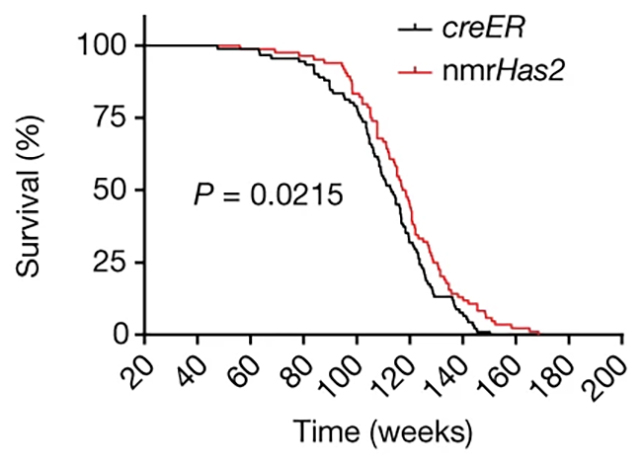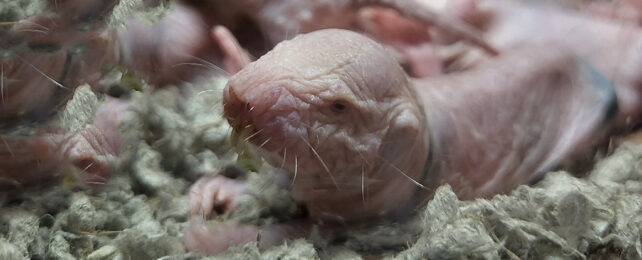Naked mole rats are well known for living far longer lives than any rodent ought to have. It's just one of their amazing talents for surviving in a challenging, even hostile underground environment.
A fascinating new study led by researchers from the University of Rochester in the US has shown a single gene could play a significant role in their longevity, one that could be transferred into other mammals to give their own life spans a nudge.
The gene – a version of what's known as hyaluranon synthase 2 – produces an abundance of high-molecular-mass hyaluronic acid (HMM-HA), a compound already thought to mediate the risk of cancer in naked mole rats (Heterocephalus glaber).
Mice engineered with the gene lived on average around 4.4 percent longer than those in a control group.
These transgenic 'naked mole rat' mice were also shown to be better protected against different types of cancer, presented less inflammation throughout their bodies, and had healthier guts as they aged, so they weren't showing some of the most typical signs that appear as a body gets older.

"Our study provides a proof of principle that unique longevity mechanisms that evolved in long-lived mammalian species can be exported to improve the lifespans of other mammals," says biologist Vera Gorbunova, from the University of Rochester.
Naked mole rats really are extraordinary: they can live to more than 40 years old, whereas the mice in this study typically lived for 3 to 4 years. Female naked mole rats also stay fertile until the end of their lives, another sign of healthier aging.
This study didn't examine in detail what the extra HMW-HA might do, but the researchers think it has something to do with how it directly regulates the immune system, protecting against oxidative stress that can lead to harmful levels of inflammation.
Further studies will be required to look into that, and to figure out how the same health-boosting, anti-aging effects might be achieved in humans. There are a variety of possible approaches for both increasing the production of HMW-HA and making sure it lasts longer in the body.
This isn't the first time scientists have tried to copy the genetic instructions in naked mole rats to improve human health – and if they manage to get it right in the years ahead, we may be able to borrow some of the biological codes to longevity and disease resistance. That's going to take time, however.
"It took us 10 years from the discovery of HMW-HA in the naked mole rat to showing that HMW-HA improves health in mice," says Gorbunova.
"Our next goal is to transfer this benefit to humans."
The research has been published in Nature.
